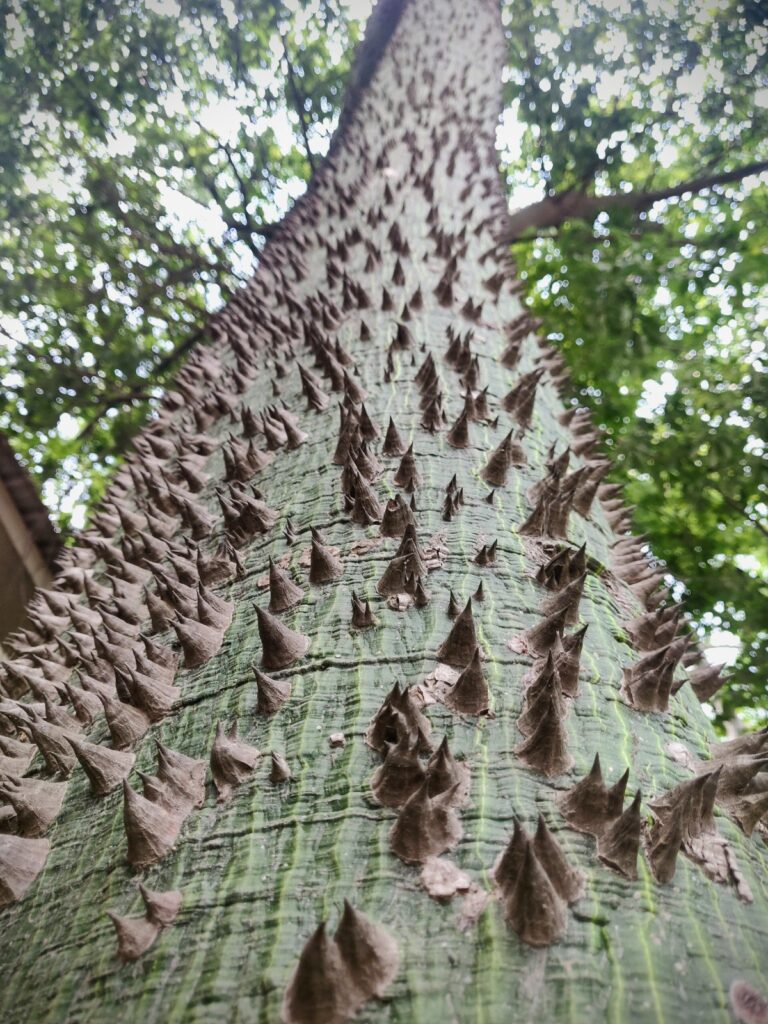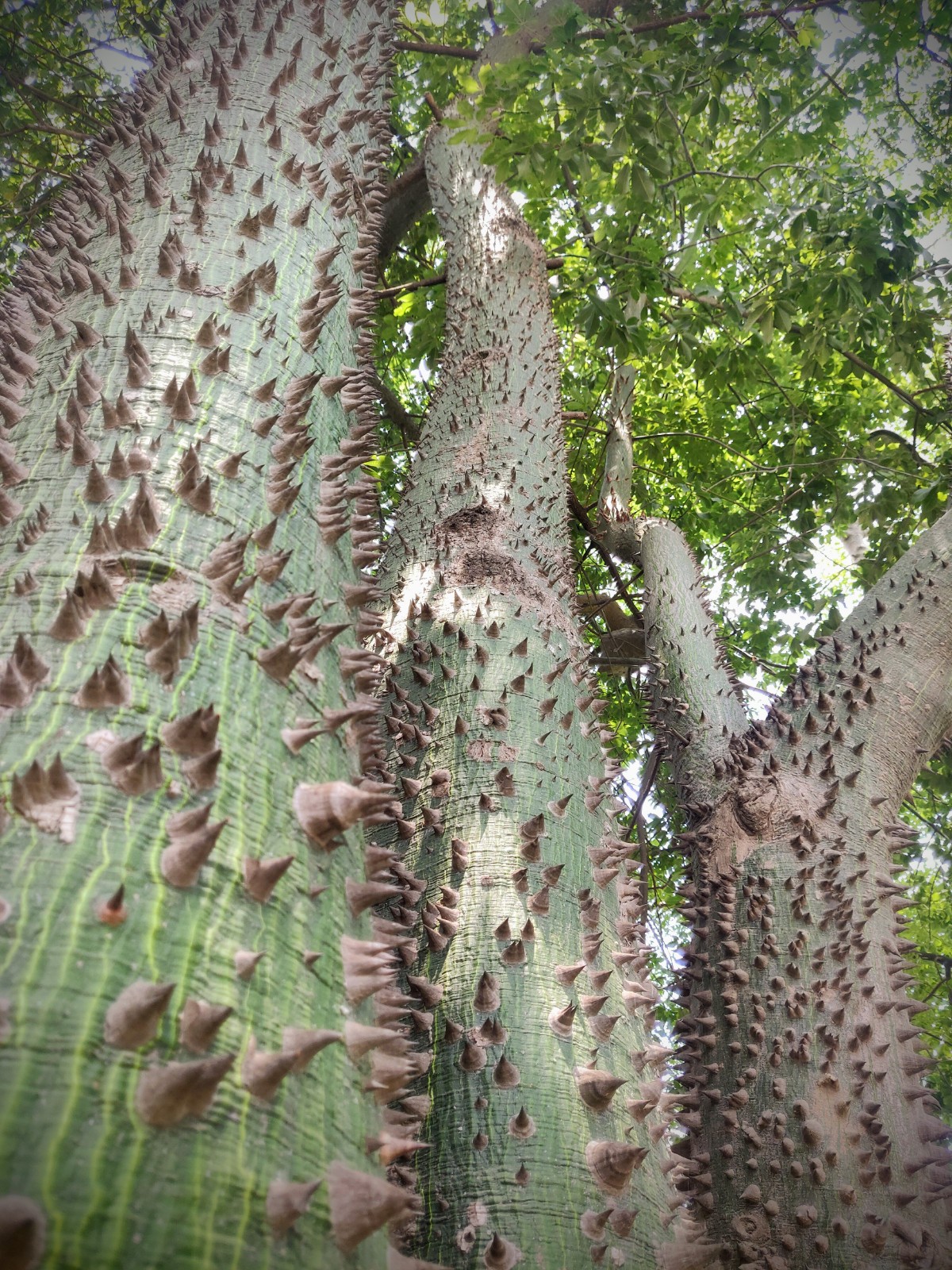Anil Bairwal, Sep 2022

On one of my trips into the Uttarakhand mountains last year, I stopped for a short break at the Cheetal Grand restaurant, near Muzzafarnagar. For those of us who have been taking the old National Highway 58(now re-numbered) for decades, Cheetal restaurant used to be our usual (and possibly the only one of its kind) pit stop. It had such a reputation that it wasn’t possible to go past it without a brief halt.
Now, of course, things have changed. There are all sorts of restaurants, from local to national chains, dotting the highway, and consequently, I have been going past this restaurant for quite some time. The restaurant has also shifted location a few times, and although it is always crowded, I just wasn’t sure how good this place was.
As I was about to enter the restaurant, I noticed a strange tree next to the entrance. It was a hot afternoon, and I was craving the air-conditioned dining hall, but the tree trunk looked so unusual that I veered toward it. There were spiky thorns not only on the trunk but also on the branches. What tree was it? I became curious.
I wanted to get a feel of those thorns and went close to it by crossing a small hedge and the picket fence around it. The thorns were as they looked—sharp and strong. Each was more than an inch long. When I placed a finger on one of them and applied a little pressure, it seemed ready to puncture my skin. I tried twisting it and found that it was too strong. It didn’t budge even a little.
The security guard told me that it was a semal tree, also called the Indian silk cotton tree. I had seen several cotton trees (in fact there are two in the colony I live in) but none with thorns on them. I am told that they disappear as the tree ages.
The mighty thorns made me curious, and I did a google search and found that the tree has a lot of significance not just in traditional medicine but also in the social and cultural affairs of many communities. Its flowers are used as vegetables, and its lightweight wood is especially valued for making toys, musical instruments, boats and so on. Almost all parts of the tree—the bark, the leaves, the twigs, the thorns, even the roots—are used to treat various ailments.
The tree also has several myths associated with it. Several communities in Rajasthan, MP and on the UP-Nepal border even have folk songs about it. Some consider this a holy tree. Its branches are used as Prahalad in Holika-Dahan(the burning of a pyre on the eve of Holi). There are also stories about these spiky thorns, about how the tree developed them. One Oriya story says that they are the teeth of a demon that sat on the top of the tree to deter others from climbing the tree.



And during spring, when the tree blooms with flowers, it becomes a magnet for all kinds of birds, who flock over to this tree to feed on the nectar of these flowers. All in all, an extremely fascinating tree. Amazingly, we know so little about such a marvellous tree.
These days, whenever I am passing through the area, I always stop at this restaurant, particularly if I have someone accompanying me. When I show them the spikes and tell some facts about the tree, they too are left as dumbstruck as I had been. It also raises their curiosity about other trees that they come across. Stopping here has always been worth it notwithstanding what the restaurant offers.
